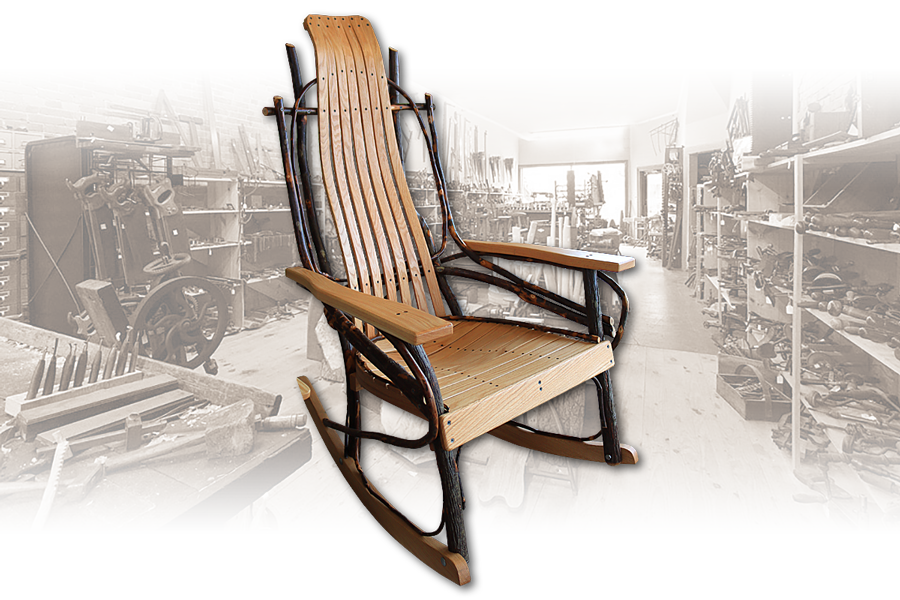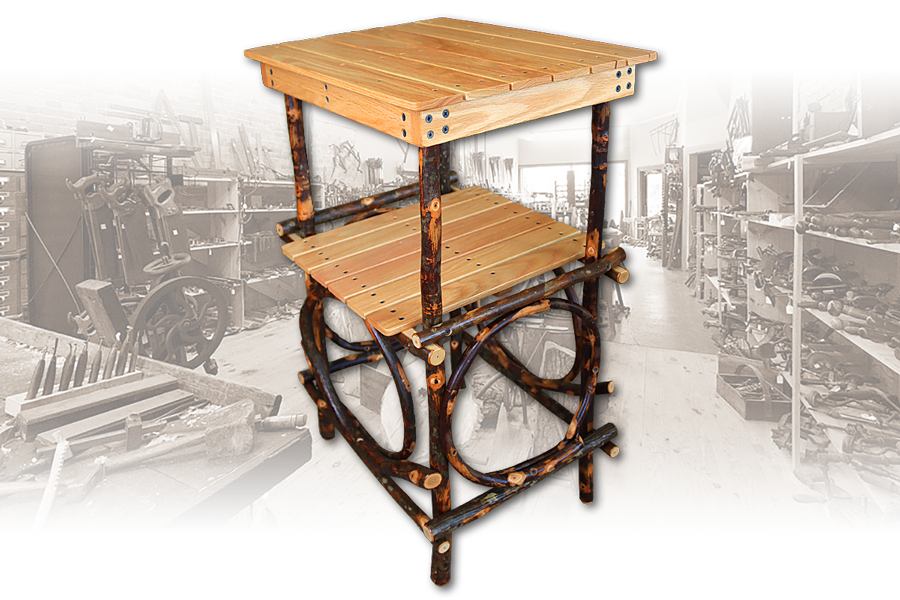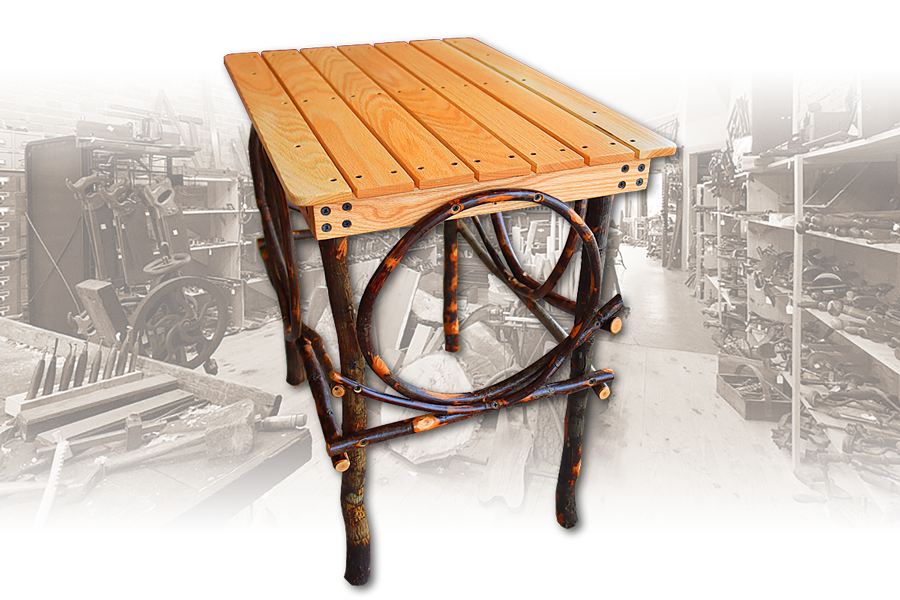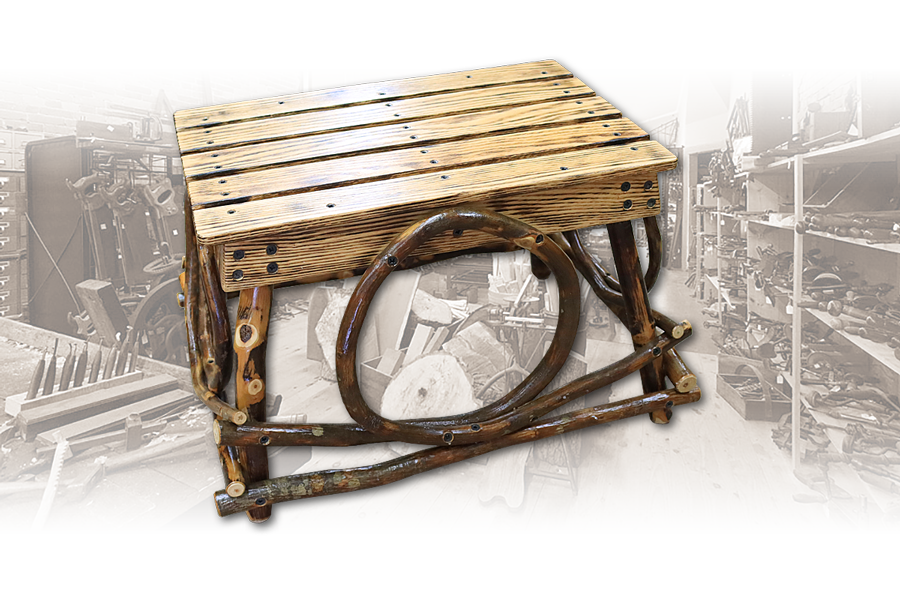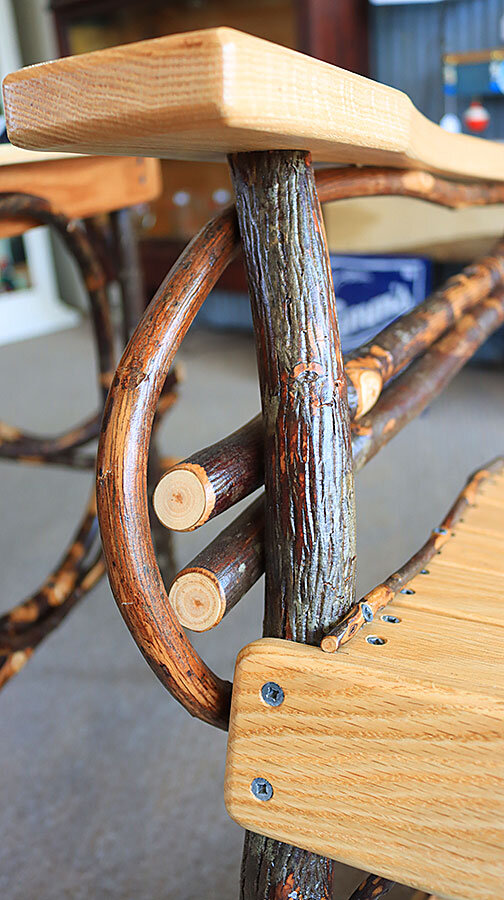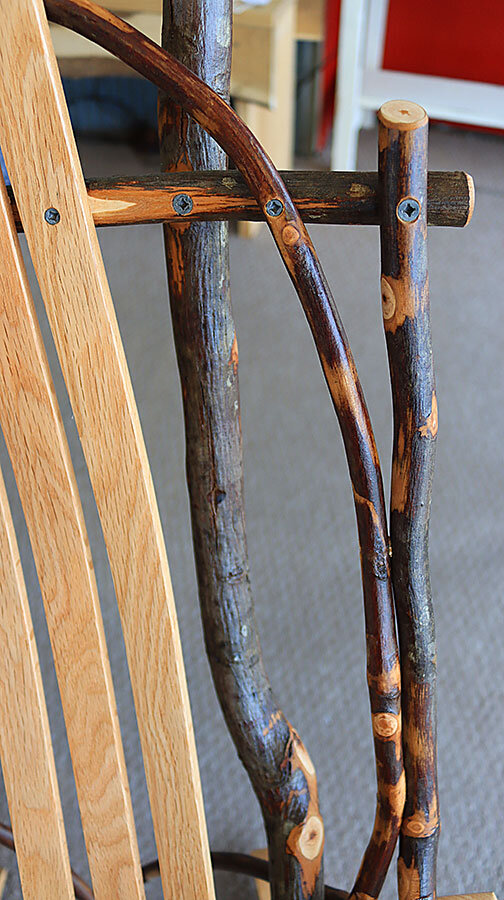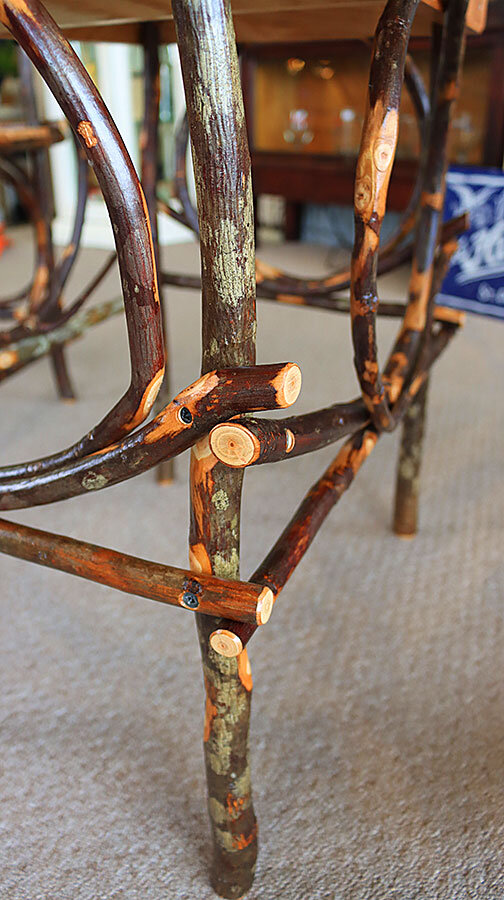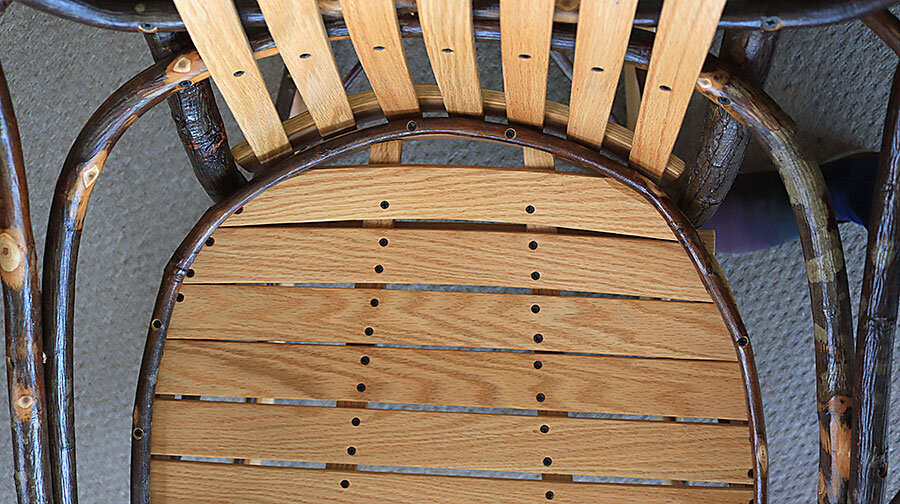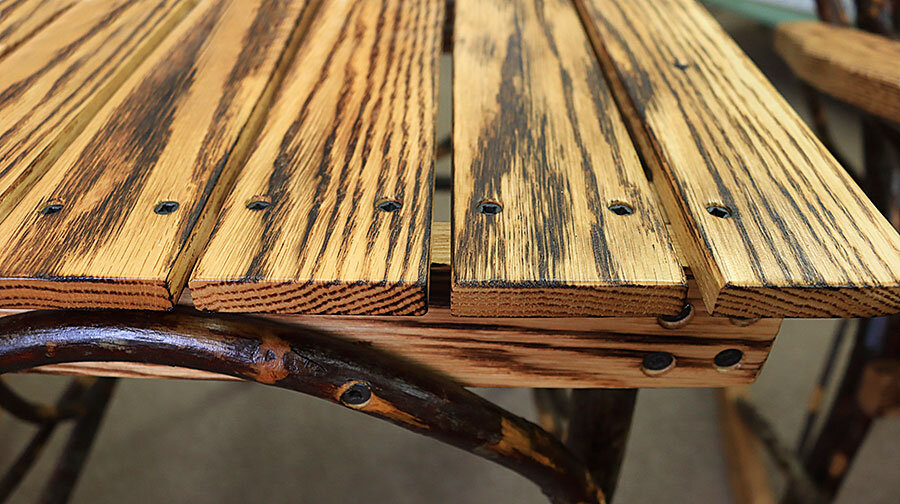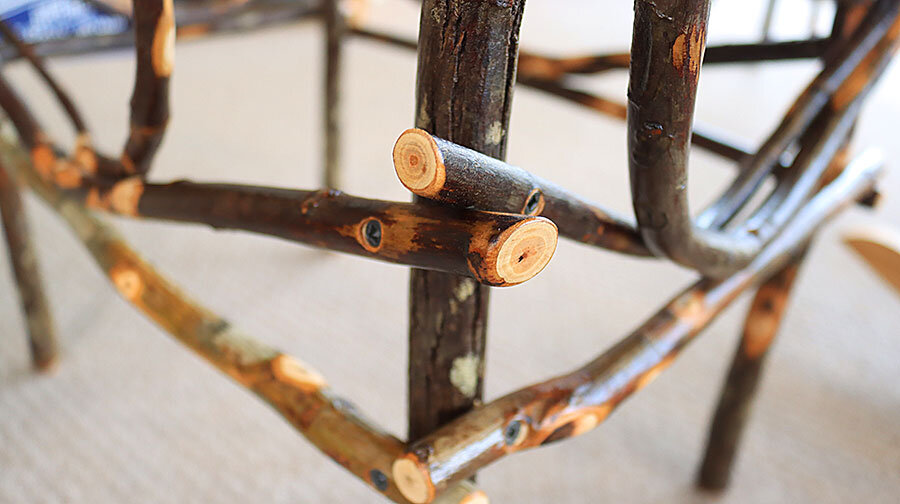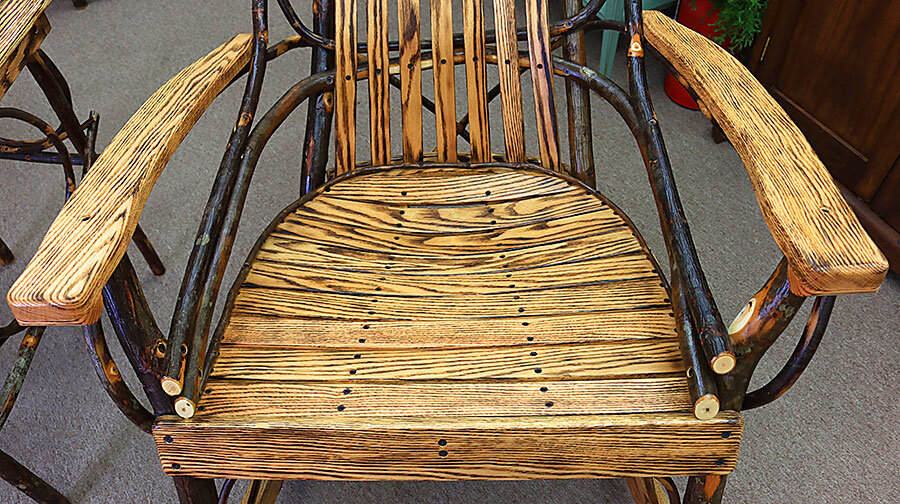An in-depth look at the process of turning this sturdy wood into a beautiful piece of rustic furniture.
One of the most popular and sought-after home decor themes is wooden furniture made from Hickory. This stylish medium adds character to a home by incorporating the look of a comfortable and cozy atmosphere often found in rustic log cabins along the lakes of Minnesota.
However, finding high-quality furniture like this can be tricky—especially when Hickory is not a native wood from Minnesota. Thanks to the hands of Amish carpenter Daniel Miller, you can now choose from a variety of pieces at Past & Present that showcase this stunning and distinctive wood style.
Preparing the Hickory for Construction
Stiff, dense, and shock resistant, Hickory is as durable as it is beautiful—a characteristic that cannot be found in other commercial woods. So, how does one use such a difficult medium to craft this distinctive furniture?
Predominately growing in states East of the Mississippi River, this furniture begins its journey as sprouts/saplings that are cut in January and February and transported from Mississippi to Minnesota. After their trip, the saplings must air dry for six months prior to using. Pieces that make up the oak slabs for stool seats are cut and dried for up to six weeks before they can be sanded and finished.
When the six months are up, it is necessary to soften the wood so it can become more pliable and easier to work with. Dried hickory is placed into a stainless-steel box measuring 16” wide x 12” deep x 10’ long. A wood stove with a water reservoir creates steam that rises through a hose to fill the metal box with moist air for easy softening.
The Wood Begins to Take Shape
Following this hour-long steam bath, heavy leather gloves are required to remove the wood safely for the next step of the process. Carefully bent and shaped, this is when the furniture begins to take form. At this time, oak slats for the back and seats are also steamed and formed for their inevitable placement. Finally, newly shaped wood is placed into jigs which finish forming and cooling the materials for half a day.
As soon as the saplings have cooled from being shaped, it’s time for assembly. Built with hand and screwdriver alone, it takes a total of one and a half days to build one of the rockers as seen above. Closely following a three-step finishing process, furniture is sanded between each coat of finish for a clean and precise final product.
Exquisitely designed with complimenting light and dark colors, a burnt finish is accomplished by using a hand propane torch to lightly burn the wood. Depending on the size, this step can take roughly an hour and the outcome is well worth it. When the furniture has been successfully put together, a wooden work of art remains. Often decorated with natural knots from the wood, every piece is different than the last—something that makes this furniture and home décor truly unique.
Artistry and Comfort in One
The end tables, chairs, and rockers found at Past & Present are more than just comfortable seats or convenient places to set down a book or drink. These pieces are a labor of love—labors that were carefully conceived and created to be one-of-a-kind additions for you and your home. Combined with their usefulness and aesthetically pleasing design, this handcrafted furniture holds a rustic charm that will surely stand the test of time.


